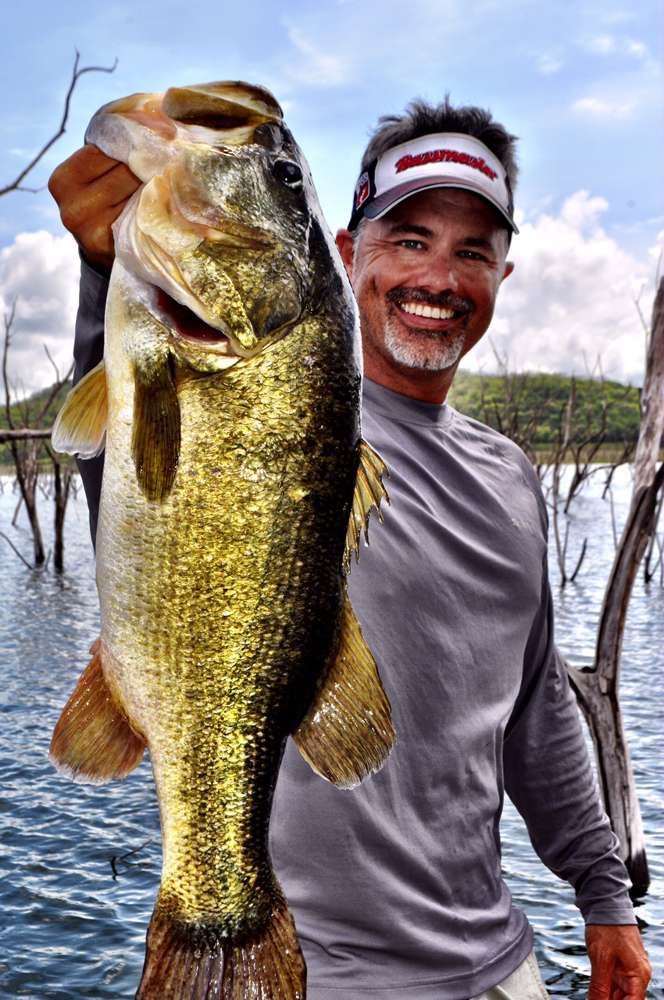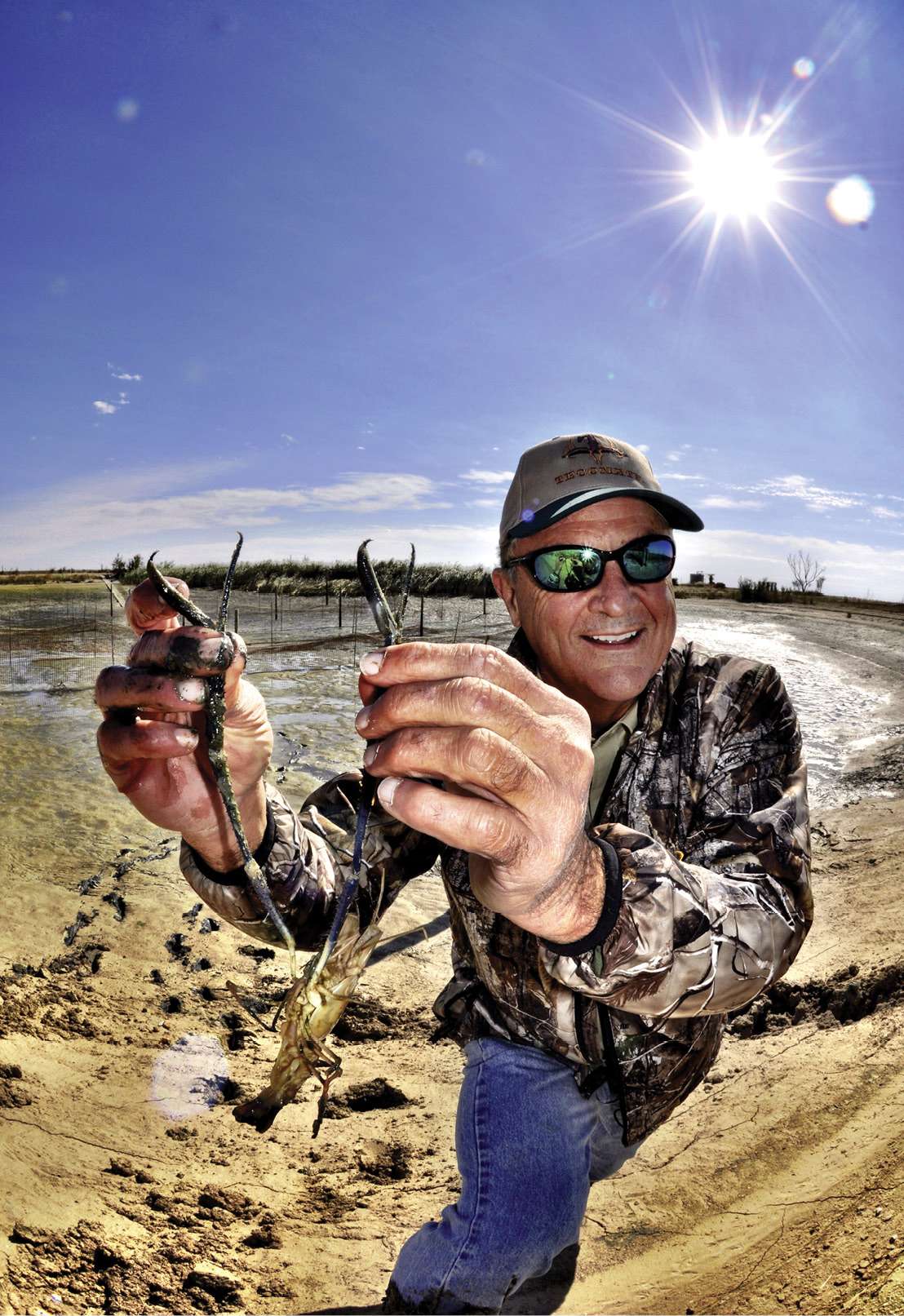
Long, spindly arms protrude from behind the head of the freshwater prawn, looking like hinged blue coffee stirrers tipped with tiny pincers. Dr. Gary Schwarz walked through knee-deep mud to grab a big male that was drying in the south Texas sun to give me an up-close view of the little beast. “It’s hard to believe that this crazy-looking creature will be responsible for growing the next world record largemouth, but I can promise you, it will,” Schwarz says.
Growing a largemouth to top Manabu Kurita’s 22-pound, 5-ounce behemoth from Japan’s Lake Biwa has been tried before. Bass expert Glen Lau tried in the ’80s. He even set up a corporation named World Record Bass Inc. Lau managed to grow a largemouth to 18 pounds in Central Florida before poachers raided his waters and killed the fish — which was also the death of his effort to top the record. Other private pond owners have tried, but all failed due to money problems, loss of interest or simple lack of results.
So, why should the bass fishing world take the promises of Schwarz seriously? His history and successes with growing whitetail deer when everyone said it was impossible are one reason. Marry that with his ingenuity, passion and commitment to the project, and you are left with a feeling that it is simply a matter of time before a 23-pound bass is lifted from one of the intensely managed lakes of Schwarz’s La Perla Ranch.
LEARNING FROM WHITETAILS
If you are a deer hunter, you likely have heard of Schwarz. In 1983, he pioneered the concept that food plots could improve the antler growth and body size of deer, which led to the development of a food plot seed mix called Lablab and eventually the creation of his Tecomate Seed Company.
“I was told that growing crops for deer would never improve the health of a herd. But, giant deer were coming out of the Midwest where woodlands coexisted with farming areas. I studied the areas where giant bucks were being harvested and noticed an ownership pattern of small farms broken up by woods. These farms were growing legume crops that were high in protein. I just felt that if you could recreate this situation, you could grow big deer anywhere.”
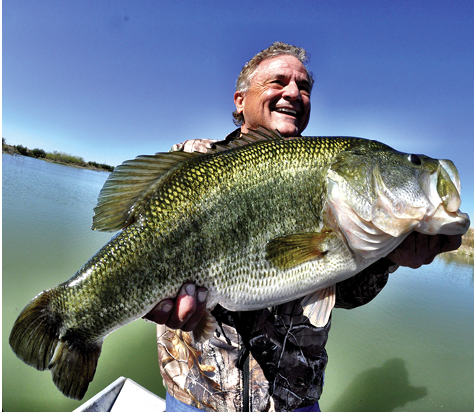 By 1989, Schwarz had perfected his formula for growing giant bucks. “After years of work and testing, I finally realized that there were four very important ingredients in growing big deer: use good farming techniques, provide the right forage, protect the forage until it offers optimum benefit to the herd, and offer the forage at the minimum threshold of volume for impact.”
By 1989, Schwarz had perfected his formula for growing giant bucks. “After years of work and testing, I finally realized that there were four very important ingredients in growing big deer: use good farming techniques, provide the right forage, protect the forage until it offers optimum benefit to the herd, and offer the forage at the minimum threshold of volume for impact.”
So, Schwarz built reversible deer fences to protect his food plots from deer until the plants were self-sustaining, and then he planted at least 5 percent of his ranch in food plots, which he determined is the minimum threshold for benefiting the deer. Once all this was in place at his El Tecomate Ranch, the biggest buck harvested went from 142 inches to 160 inches in one year. An almost 20-inch antler increase in a single year was unheard of in 1990. By 2000, Schwarz and the El Tecomate Ranch had grown world-record-class deer topping 200 inches.
Today, creating food plots to improve deer herds is common practice. And Schwarz is now laser focused to prove that this very concept will also grow the biggest bass the world has ever seen.
THE LA PERLA EXPERIMENT
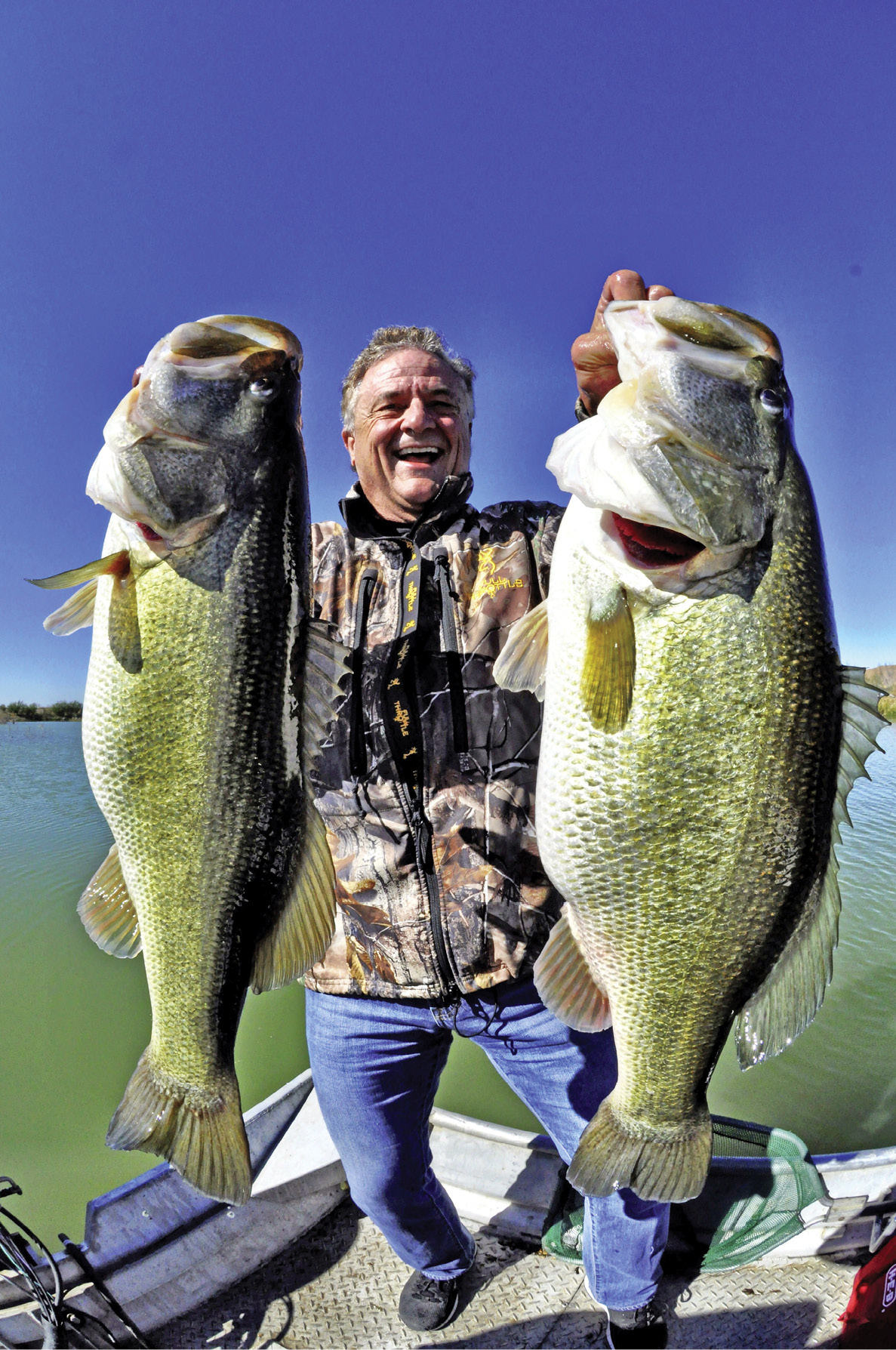 A few miles northwest of the El Tecomate Ranch near Laredo, Texas, sits La Perla Ranch. Schwarz decided to purchase it in 2005 as an investment property. Little did he know that the muddy lake (dug decades earlier for watering cattle) situated within the confines of this deer haven would capture his imagination and grow into one of the biggest private fishing projects the world has ever seen.
A few miles northwest of the El Tecomate Ranch near Laredo, Texas, sits La Perla Ranch. Schwarz decided to purchase it in 2005 as an investment property. Little did he know that the muddy lake (dug decades earlier for watering cattle) situated within the confines of this deer haven would capture his imagination and grow into one of the biggest private fishing projects the world has ever seen.
“I brought down John Jones, owner of Lochow Ranch Lake Management, to take a look at La Perla Lake. It was an ugly, milk-colored body of water and supershallow throughout, that wasn’t designed for fishing,” Schwarz explains.
Jones and his team of biologists shocked the lake and reported miserable results. The largest bass they found weighed maybe a pound.
So, Schwarz and Jones decided to completely rebuild La Perla for bass management, because he was an avid angler and liked the idea of having a private lake where he and guests could have fun catching bass.
“Gary completely redesigned the footprint. It went from a featureless pond to the most unique private body of water in the country, bar none,” Jones says. And he would know, as his company has managed more than 5,000 private ponds (www.lochowranch.com).
Once filled, La Perla Lake sprawled across 90 acres. But because islands, peninsulas, coves, fingers and canals were designed into it, the lake has more than seven miles of shoreline, which is equal to a lake five times larger than La Perla.
“The shoreline percentage on a small lake is very important,” Jones explains. “This not only gives bass more places to comfortably live and feed, but gives anglers more places to fish. So, the same areas don’t get over-pressured.”
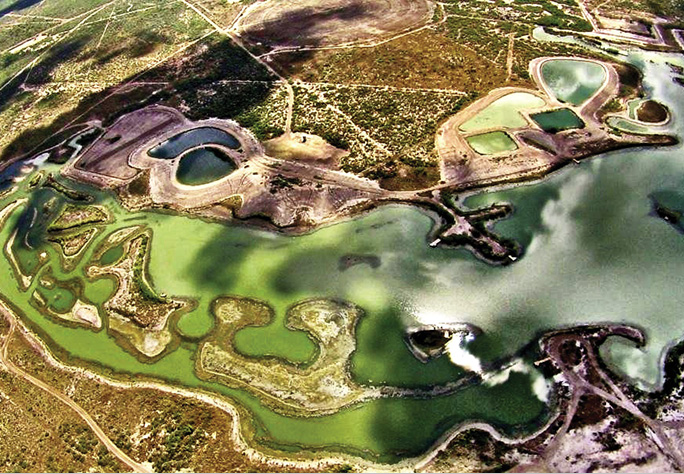 Initially, Jones stocked his standard mix of trophy forage in La Perla, including sunfish, minnows, shad and shiners. Once the forage base was established, pure Florida-strain largemouth were stocked. And the waiting game began.
Initially, Jones stocked his standard mix of trophy forage in La Perla, including sunfish, minnows, shad and shiners. Once the forage base was established, pure Florida-strain largemouth were stocked. And the waiting game began.
One spring afternoon in 2007, as Schwarz was walking the hill that overlooks the lake, he looked in the distance and noticed one of his reversible deer fences and an interesting concept hit him.
“I realized standing on that hill that I could create food plots for bass. I could dig forage ponds on top of that hill, grow shad and sunfish until they were big enough to make a difference in bass growth, and then flush them down into La Perla Lake. These would be like reversible deer fences for bass.”
Jones didn’t like the idea. “I have seen people try this in the past. Usually, money is better spent on adding forage and feed to a private lake.”
But, Schwarz did it anyway. He had proved biologists wrong in the past and was confident in the concept. Using the same ratios that succeeded with whitetails, Schwarz constructed three forage ponds that equaled about 5 acres, or just over 5 percent of the size of La Perla.
Although the concept seemed sound, shocking data was less than impressive in 2008. The bass were still 10 percent below target weight for their length. Then a random idea popped into his head that would change the face of bass management on La Perla and put his sights on growing a world record largemouth.
“Freshwater prawns. How cool would it be to fill my bass food plots with creatures that grow fast, are very high in protein content — kind of like my Lablab for deer — and provide an easy target for largemouth?” Schwarz says.
He took the idea to Jones, who did not at all like the concept.
“Honestly, I thought it was a bad idea. And honestly, I was wrong,” Jones admits.
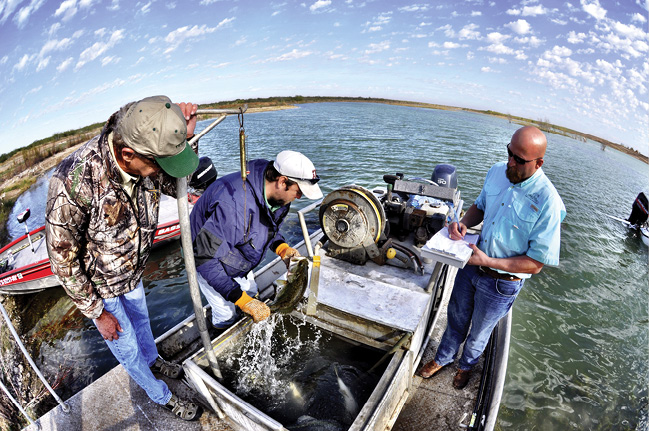 In 2009, all the forage ponds were stocked with prawns, which can grow to more than 12 inches in body length (add their long pincers and some could reach 2 feet). Since these crustaceans must reproduce in saltwater, they are seeded at the larval stage, when they are about the size of a baby mosquito. Once the prawns matured, the forage ponds were flushed into La Perla on a staggered schedule throughout 2009, and the bass responded with never-before-seen growth rates.
In 2009, all the forage ponds were stocked with prawns, which can grow to more than 12 inches in body length (add their long pincers and some could reach 2 feet). Since these crustaceans must reproduce in saltwater, they are seeded at the larval stage, when they are about the size of a baby mosquito. Once the prawns matured, the forage ponds were flushed into La Perla on a staggered schedule throughout 2009, and the bass responded with never-before-seen growth rates.
By the end of 2009, bass went from 10 percent below target weight to 10 percent over target weight. The following year, the first 5-pounder was caught from La Perla. Three years later, the first double-digit fish was caught. And in 2012, an 11-pounder was caught.
“Although the growth rates were crazy after the prawn introduction, I was disappointed in my catch rates. There were a lot of fish in my lake, but man, they were tough to catch. So, I went against the recommendation of John and had him add F1 hybrid largemouth to La Perla. What I wouldn’t do to go back in time and reverse that decision!” Schwarz admits.
Once a hybridized bass is introduced, the pure Florida genetics will eventually be bred out of the bass population. This is a major issue for the world record project, because it is not likely that a hybrid largemouth can ever grow to enormous proportions like the pure Florida strain.
That said, a shocking study in December 2013 resulted in seven bass over 10 pounds, including an 11-8 and a ShareLunker-worthy 13-15. This matriarch of La Perla has been named “Pearl,” and could be Texas’ new state record in two years.
That said, Schwarz believes that stocking hybrid bass was an insurmountable mistake to realize his fevered passion to build the world’s biggest bass. So, he decided to dig another lake with one very singular purpose: Bring the largemouth world record to the Lone Star State.
ENTER JALISCO
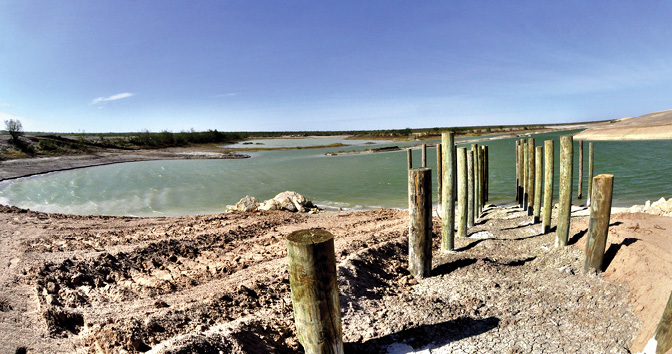 When you crest the hill that hides Jalisco Lake from the road that enters the backside of La Perla Ranch, the amount of moved earth is almost breathtaking.
When you crest the hill that hides Jalisco Lake from the road that enters the backside of La Perla Ranch, the amount of moved earth is almost breathtaking.
“I decided to build Jalisco Lake to fix all the mistakes I made with La Perla,” Schwarz says. “I think I will be able to grow a Texas state record bass [an 18.18 from Lake Fork currently holds the top spot] in La Perla, but I’ll grow the world record in Jalisco.”
“Although I disagree a little bit with Gary on La Perla, I do believe the plan for Jalisco offers 10 times the opportunity to grow not just one 23-pound bass, but to get an entire year class of fish to that size,” Jones states plainly. (Jones believes there are plenty of pure Floridas in La Perla for that lake to produce a world record.)
So, why will Jalisco be better?
“First off, we have a small portion of the lake already filled with water and stocked with shad, bluegill, minnows and shiners. They have had two years to become established before the lake is filled. Secondly, Gary has created much larger forage ponds for the prawns, which will equal almost 40 percent of the lake’s capacity. Plus, we are stocking a very specialized strain of pure Floridas that have the genetics to grow really big, really fast,” Jones says.
Like he did with La Perla, Schwarz has designed every inch of the lake to be optimum for bass but also offer a challenging and unique experience for bass anglers.
“With some guidance from Alton Jones [see sidebar] and building on my experience from designing La Perla, we have created an absolute bass haven,” Schwarz says.
Looking at the miles of dirt work, it’s hard to disagree. Long points of boulders, deep rockpiles, big and small islands, humps, fingers, long canals and perfectly positioned ridges have all been sculpted into the personality of Jalisco. And to add even more to the efficiency of the intense forage base that will feed the Jalisco bass, Schwarz is adding at least 30 feeders around the lake to keep the sunfish and shad fat and healthy.
Plans are to fill Jalisco this year. Schwarz anticipates the lake will be around 60 acres at full pool.
“It’s going to be exciting watching this project unfold,” Schwarz declares. “Beyond growing a world record, I think we have the chance to discover the true potential of largemouth here. How big can they really get? I want to create the best bass fishing destination in the world. Between La Perla and Jalisco, I think we will be there.”
So what is Jones’ opinion of Schwarz’s goals?
“I believe 100 percent that the next world record will come from private waters,” says the Lochow Ranch Lake Management owner. “To my knowledge, nobody has a lake with the potential of either La Perla or Jalisco. And Gary’s passion to manage these lakes grows every year, and I have never, ever seen this happen with a lake owner.”
Some critics will downplay this project as Texas talk: all hat, no cattle. But don’t be so quick to judge.
“Deer biologists told me I couldn’t grow giant whitetails, but I did. Fisheries biologists said my bass food plots with prawns wouldn’t work, but they do. Can Pearl become a state record? Can Jalisco grow the world record? I say absolutely. And I will continue to push the envelope of bass management until these questions are answered.”
Why Prawns Win
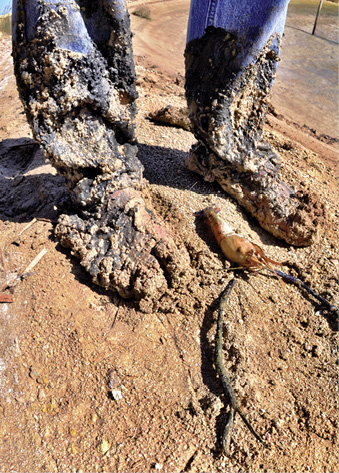 There are several reasons why freshwater prawns make the perfect forage for largemouth bass, according to John Jones, owner of Lochow Ranch Lake Management.
There are several reasons why freshwater prawns make the perfect forage for largemouth bass, according to John Jones, owner of Lochow Ranch Lake Management.
“First off, you are dealing with a dumb forage species. When these things are dumped in the lake, they don’t know to flee. So, they are easy for bass to eat. Secondly, a bass gets a lot more protein out of one prawn than he does a shad or even bluegill, which enhances growth rates,” Jones explains.
Plus, when a bass is eating a prawn, it is not eating a shad or bluegill. This gives relief to these forage species, and they become reserve food for the bass during the cold months when prawns are not available. Although Jones has not done the research on the digestibility of prawns for largemouth, he tends to believe, based on the crazy growth rates he has witnessed at La Perla Lake, that largemouth gain weight more quickly eating the shrimp than eating traditional baitfish.
All this said, prawns aren’t for every private lake. These crustaceans die when water temps dip below 55 (which eliminates lakes above I-20) and may be considered an invasive species for lake managers near the coast. Lake owners should check with area biologists before considering prawns as a responsible forage option.
Elite Input
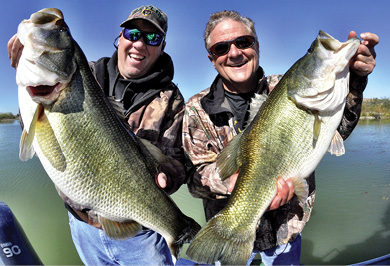 Dr. Gary Schwarz met Elite Series pro Alton Jones in 2010 through a charity tournament that raises money for underprivileged kids (www.lifelineyouth.org). La Perla Ranch hosted a portion of the event where Jones and Schwarz became fast friends.
Dr. Gary Schwarz met Elite Series pro Alton Jones in 2010 through a charity tournament that raises money for underprivileged kids (www.lifelineyouth.org). La Perla Ranch hosted a portion of the event where Jones and Schwarz became fast friends.
“I was right in the middle of the La Perla project and asked Alton if he’d give me his opinions about what I had done,” Schwarz explains.
“Man, I had never seen another lake like it,” Jones says. “Gary had done an incredible job building this lake and thinks so far outside the box. I had never heard of anyone using prawns for bass. Gary is an absolute visionary.”
Jones has become a great resource for Schwarz and his passion to create the best bass destination in the world.
“Alton has fished everywhere in the world. He knows how bass use cover. He understands how the fish use the underwater landscape for seasonal movements. So, having him listen to my ideas and offer suggestions for cover, structure and design has simply made the Jalisco project even more special.”
Adding A Lot Of Air
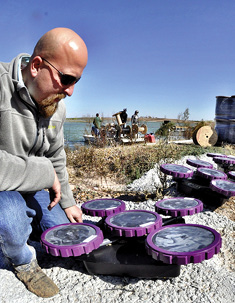 Private lakes can be plagued with a number of issues that will kill bass. Turnover, thermal stratification and a plankton crash all can kill small fisheries. To protect against this at La Perla Lake, Dr. Gary Schwarz commissioned the biggest private aeration system in the world dedicated to maintaining a bass fishery.
Private lakes can be plagued with a number of issues that will kill bass. Turnover, thermal stratification and a plankton crash all can kill small fisheries. To protect against this at La Perla Lake, Dr. Gary Schwarz commissioned the biggest private aeration system in the world dedicated to maintaining a bass fishery.
“A normal aeration system has a 1-horsepower compressor and a handful of oxygen stations to help keep a stable environment in a fishery. To protect La Perla and the incredible investment of time and resources Gary has put into the lake, we designed a system unlike any other I’ve ever heard of,” says John Jones, owner of Lochow Ranch Lake Management.
The La Perla system starts with a 20-hp compressor that pumps air through more than 4 miles of hose to 52 air stations around the lake.
The side benefit of this sprawling system is that it eliminates unproductive water, vastly increasing the lake’s carrying capacity for fish.
To view more of Bassmaster Magazine, click here.

